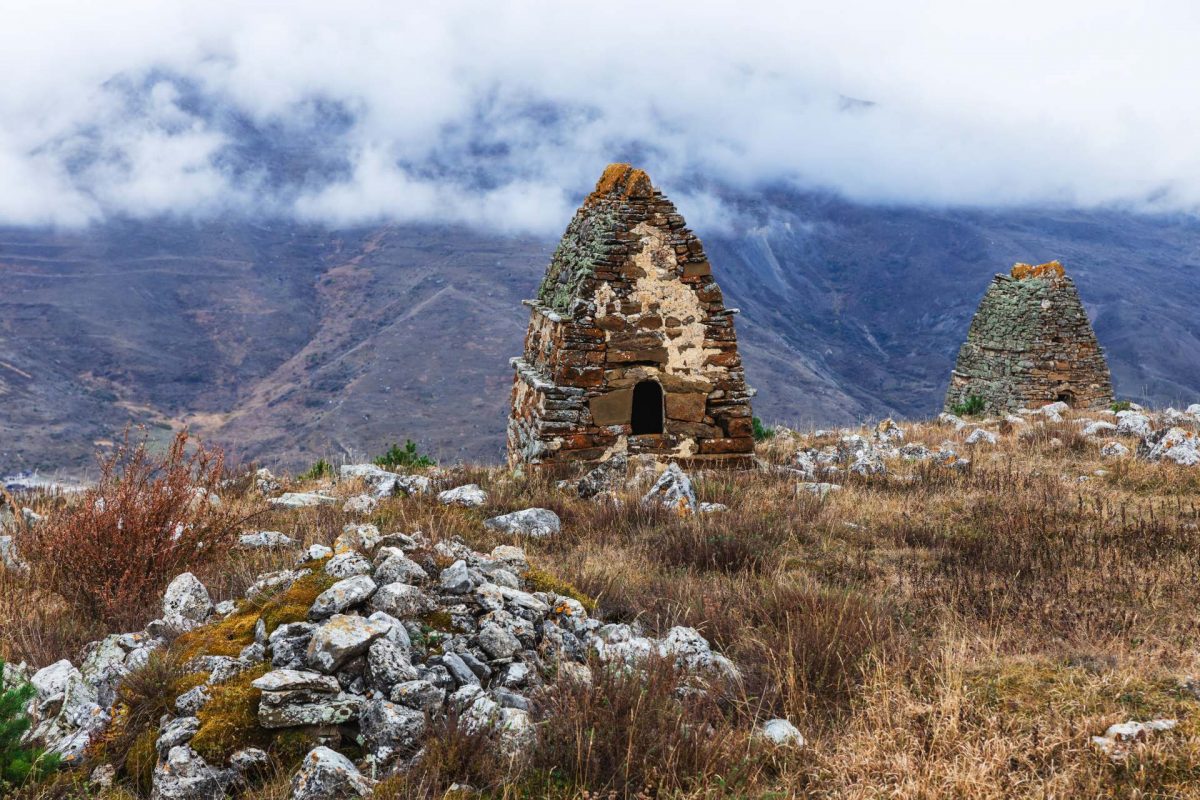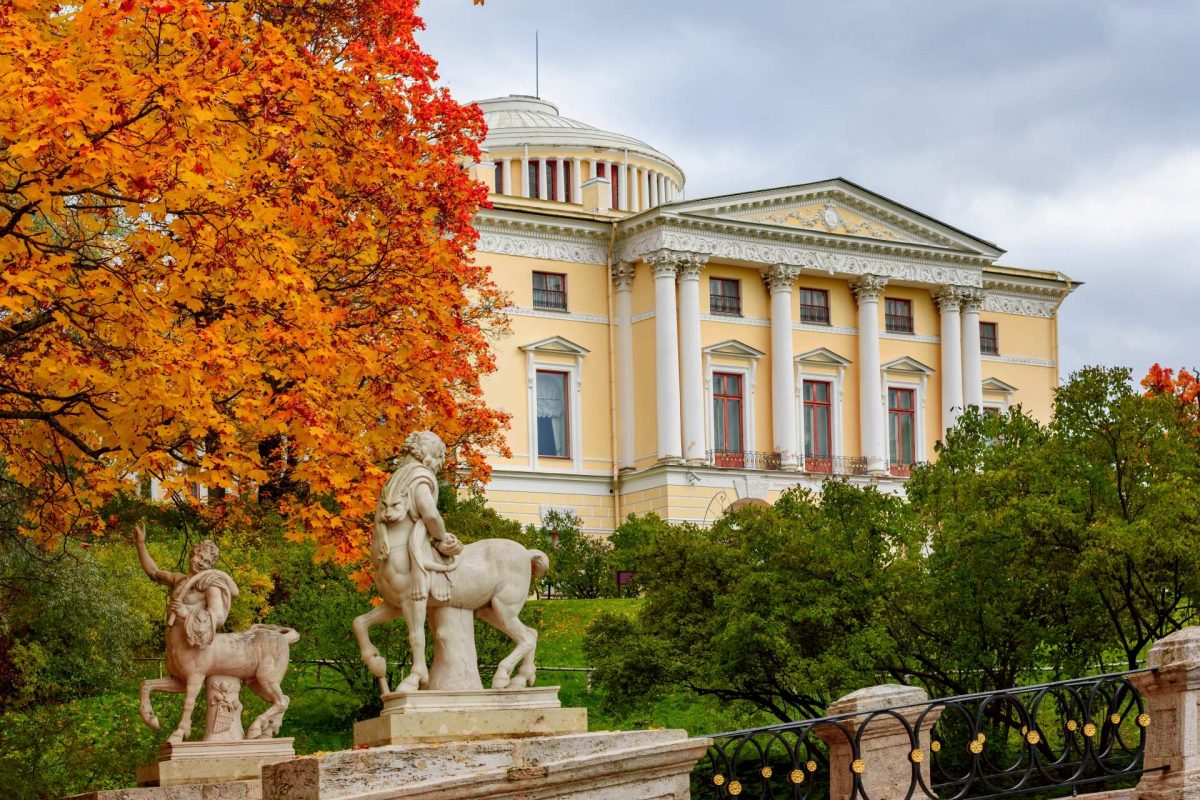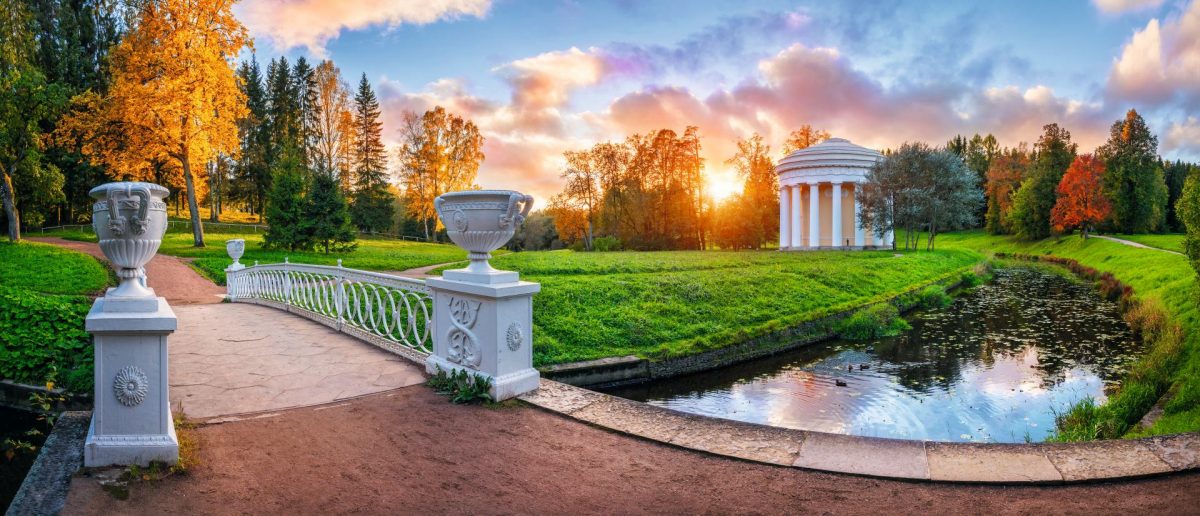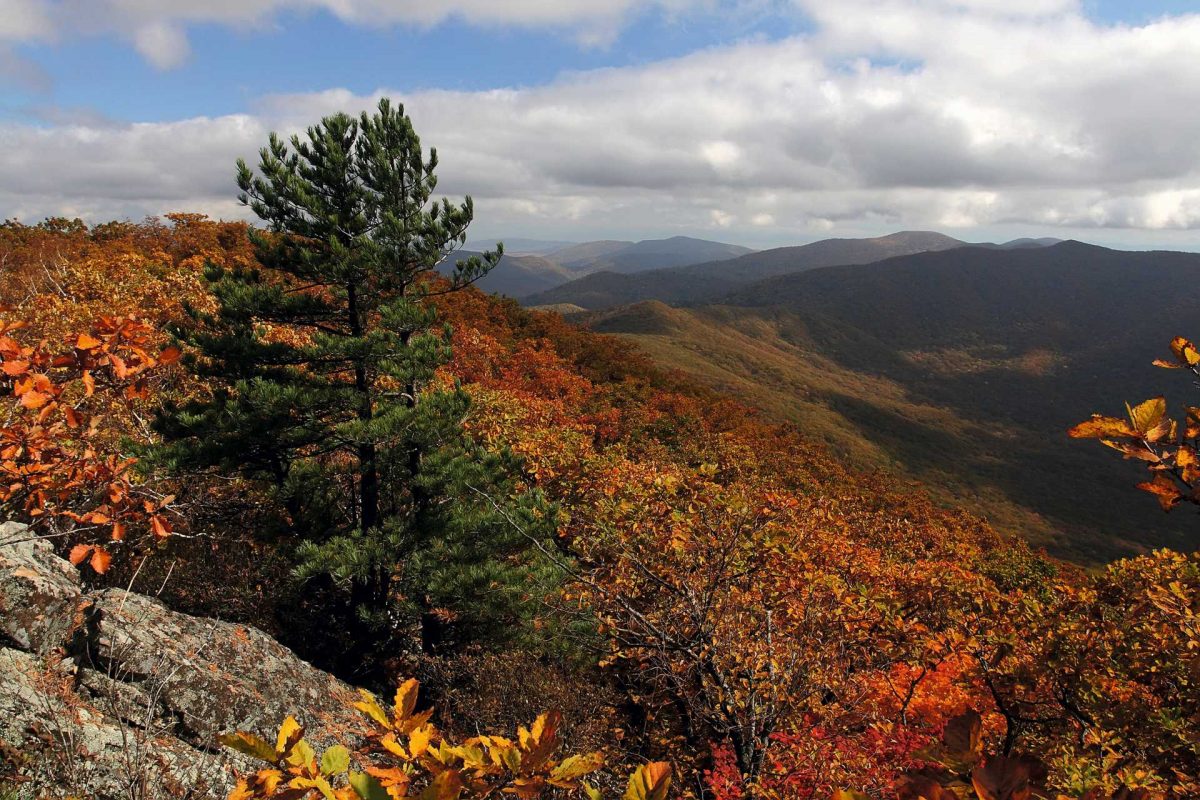Unlike Japan with its term “momiji,” Russia lacks a specific word for savoring the beauty of autumn. However, that doesn’t stop us from relishing it.

In our country, it was perhaps Pushkin, whose 225th birthday we celebrate this year, who became one of the most renowned “leaf peepers” — those who embark on journeys specifically to admire the reddening tree canopies. To witness the golden autumn in all its serene and romantic splendor, and possibly find inspiration for poetry and landscapes, it’s worth knowing the right places.
Ples
Ivanovo Region
The charming Volga town of Ples boasts one of Russia’s most picturesque landscapes. It’s no wonder that late 19th-century Russian artists flocked here in search of autumn’s unique harmony. The great landscape painter Isaac Levitan initiated this tradition. It’s said that about 20 of his famous scenes can be viewed firsthand simply by strolling through Ples. Must-see locations include Levitan Mountain and its surroundings, Sobornaya Mountain with its wooden staircase, and the wide Volga embankment. While exploring, it’s good to grab a bite of a Ples fish corner (pastry) filled with smoked bream, and to wait out bad weather in one of the many state and private museums and galleries, including the Levitan Memorial Museum.
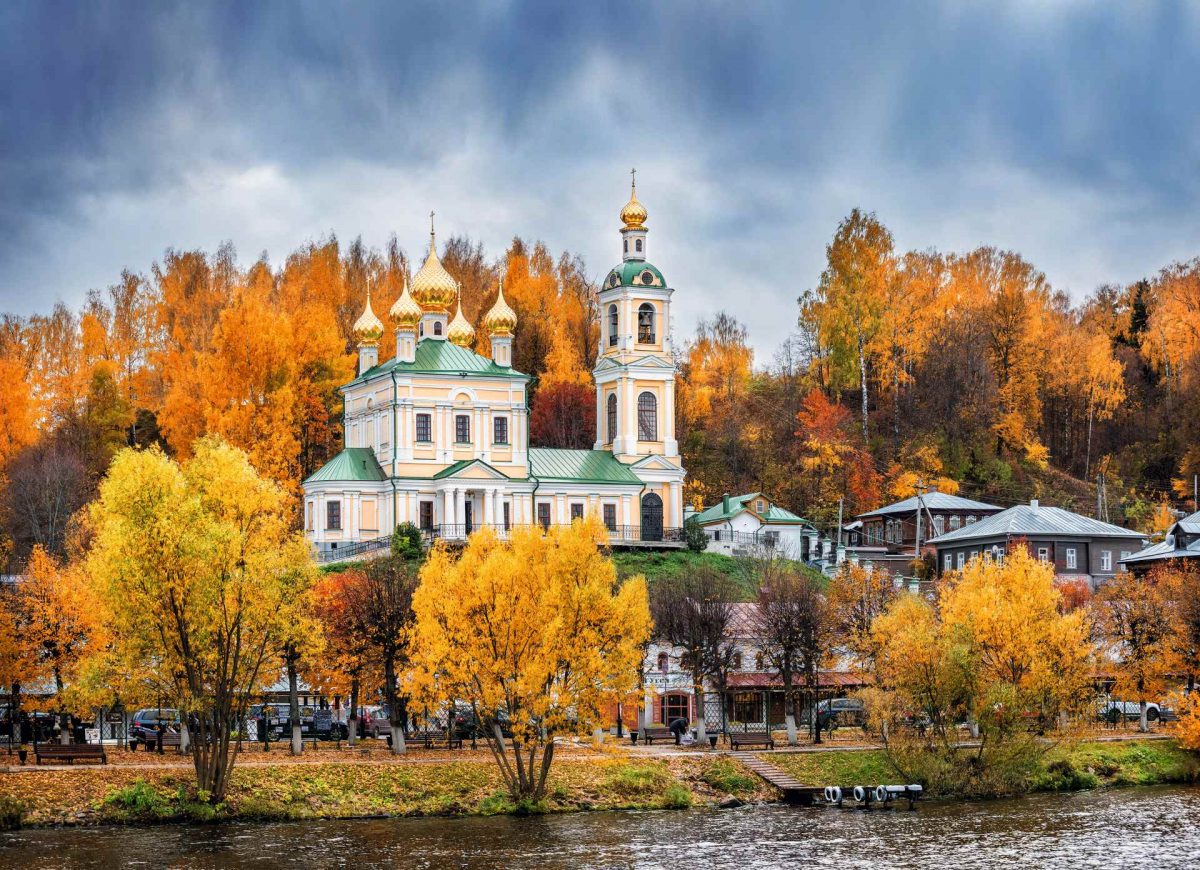
Digoria
North Ossetia
Local guides often describe Digoria — a historical and geographical region of North Ossetia bordering Georgia — as the republic’s most beautiful place. Most of its territory is occupied by the Alania National Park, featuring marked trails for hiking and climbing the Caucasian ranges — with gorges, glaciers, waterfalls, flowering valleys, and diverse herbs at every turn. Autumn here is strikingly beautiful — jagged mountains emerge against a deep blue sky: snow-white at the top due to snow and glaciers, and below entirely wrapped in a canopy of evergreen needles and blazing foliage. The most popular hikes include the Three Sisters waterfalls cascading from the Taimazi Glacier, ascending the low Kubus Mountain for its viewpoints, and then following the river to the Tana Glacier. It’s also worth obtaining a border zone pass to attempt a day trek to the Karaugom Glacier, one of the largest in the Caucasus.
Pavlovsk
St. Petersburg
St. Petersburg and its surroundings boast numerous grand palace and park ensembles. However, none can rival Pavlovsky Park — a masterpiece of garden architecture from the late 18th to early 19th centuries. Once, vast forests lined both banks of the Slavyanka River, hosting royal hunts. Commissioned by future Emperor Paul I and his wife Maria Feodorovna, the classicist master Charles Cameron and his followers gradually transformed the dense thicket into a landscape park with a regular layout — they carved clearings, created linden alleys, and adorned neatly laid paths with pavilions, bridges, amphitheaters, bronze sculptures, colonnades, flower beds, and exquisite landscape compositions. A great idea for a warm autumn day is to rent a bicycle and explore the remote corners of Pavlovsky Park: particularly lovely are the secluded Valley of Ponds and the Red Valley, designed by Pietro Gonzaga.
Rominten Forest
Kaliningrad Region
Once, the dense Rominta forests on the Vishtynets Upland were hunting grounds — first for Teutonic Order grandmasters tracking deer and wild boars, then home to one of Kaiser Wilhelm’s residences and even Goering’s dacha. To this day, well-preserved cobblestones can be seen on forest roads, memorial stones carved with hunting trophy statistics are scattered throughout, and arched bridges spanning small rivers remain intact. Now, the Rominten Forest is the second most important ecotourism destination (after the Curonian Spit): visitors come to explore the Vishtynets Ecological and Historical Museum in Krasnolesye settlement, taste chocolate at the local shop, and enjoy hiking and cycling along trails, especially beautiful during the golden autumn. And not least, to swim in the glacial lakes Marinovo and Vishtynets.

Land of the Leopard National Park
Primorye Territory
Located an hour’s drive from Vladivostok, the Khasansky district of the Primorye Territory borders China and North Korea. Travelers are drawn here by the eco-trails of the Land of the Leopard National Park, which holds the status of Russia’s most protected “feline territory.” In 2012, it incorporated the Kedrovaya Pad Nature Reserve, as well as the Far Eastern Marine and Ussuri Nature Reserves. It’s home to the Amur leopard, Amur tiger, Far Eastern wildcat, and lynx. However, tourists won’t be able to spot these elusive predators — even park rangers only observe them through camera traps set up throughout the park. But during walks, visitors can endlessly admire the reddening canopies — autumn here is all-encompassing, impossible to ignore. Uniquely, this area boasts eight maple species and seven birch species, including the endemic Schmidt’s birch, all visible simultaneously. The natural flora diversity in the Land of the Leopard National Park is unparalleled in the entire Russian Far East: over a thousand species, including 77 rare ones listed in various levels of Red Books.
Photo: press-office; Shutterstock.com; G.Yusin/Land of the Leopard National Park; D. Kochetkov/Land of the Leopard National Park

